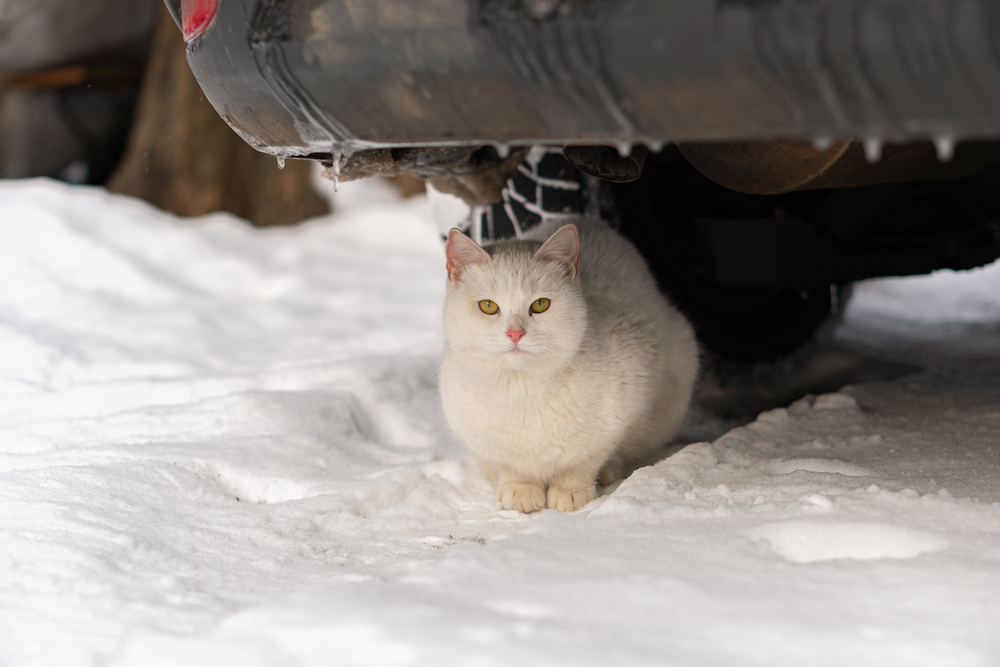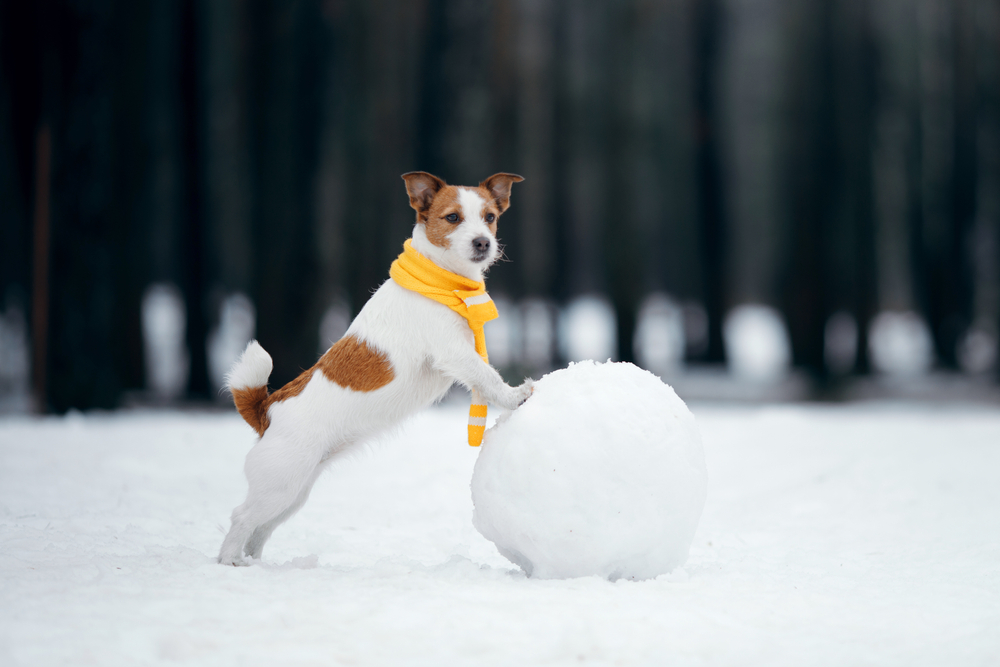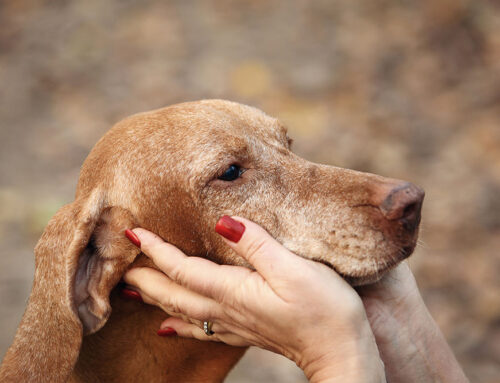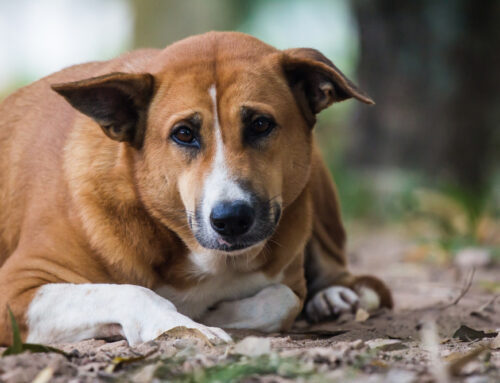When the temperatures in Central Kentucky drop and severe winter weather looms, pets across the region are at an increased risk of cold weather-related hazards and health conditions. Ensure your pet stays warm and safe all winter by learning to recognize common cold weather hazards and taking steps to protect your furry pal. Read our Central Kentucky Veterinary Center team’s five tips on caring for your pet from head to toe when it’s cold outside.
#1: Consider your pet’s cold tolerance
Even though dogs have fur to keep warm, not all breeds enjoy being out in icy weather. Each pup tolerates cold weather differently depending on their breed’s characteristics:
- Coat type — Dense, curly, and double coats trap heat better than short, single, or fine coats.
- Coat color — Dark colors absorb sunlight’s heat, while light colors reflect ultraviolet rays.
- Size — Small pets have a higher surface-area-to-mass ratio, and lose heat more quickly than larger pets.
- Leg length — Because they are closer to the ground, pets with short legs feel the surface’s cold more intensely.
- Age — Young pets and seniors have difficulty regulating their body temperature and may become cold more quickly than adults.
- Health status — A pet with a health condition may lack insulating body fat and feel the chill much much more quickly than normal or overweight pets.
Depending on these factors, your pet may benefit from wearing appropriate cold weather gear that can protect them from the harsh elements. A properly fitted waterproof jacket or vest is a great way to trap your pet’s body heat while repelling moisture. Make sure your pet’s jacket fits snuggly without restricting their movement. You should be able to fit two fingers comfortably between the jacket and your pet’s neck.
#2: Adjust your pet’s grooming routine
Your pet’s coat provides insulation from the cold, and matted fur is less efficient at helping them retain their body heat and keep the snow and cold rain out. Regularly brush your pet’s coat to keep their fur healthy, and avoid shaving them in the winter—especially double- or triple-coated breeds such as huskies, malamutes, and Pomeranians—because their outer coats help them regulate their temperature, while their inner coats provide insulation
#3: Protect your pet’s paws
Dry air, snow, ice, and sidewalk salt chemicals can injure your pet’s paws. To protect your four-legged friend’s paws from winter weather’s hazards, follow these tips:
- Trim the hair around the paw pads — This will help prevent ice and snow from balling up between your pet’s toes.
- Use paw balm — Paw balms help keep your pet’s paw pads moisturized to prevent irritation and cracked skin.
- Wipe your pet’s paws — After being outside, check your pet’s feet for cracks, cuts, and debris, and remove all ice and snow that has accumulated in your pet’s fur or on their feet to prevent them from licking and ingesting harmful chemicals. Your pet may become seriously ill if they ingest salt and chemicals used to melt snow and ice.
- Consider pet booties — Protective footwear, such as pet booties, can protect your dog’s paw pads from harsh chemicals, and prevent cold weather injury while providing extra traction on slippery ice.
#4: Limit time outdoors
Remember, when you are uncomfortably cold, your pet is likely also too cold. Temperatures below freezing are uncomfortable for most pets, and you should keep your pet inside on these days, only letting them out for potty breaks. Supervise your pet the entire time they are outside, and monitor them for these hypothermia signs:
- Shivering
- Lethargy
- Shallow or labored breathing
- Low heart rate
- Dilated pupils
- Pale or bluish skin
#5: Protect your pet from toxic antifreeze

The active ingredient in antifreeze— ethylene glycol—is a sweet-flavored, odorless liquid that pets cannot seem to resist, and small amounts are toxic for cats and dogs. Prevent your pet from licking antifreeze that may have dripped in a parking lot, on the street, on your driveway, and in your garage. Contact your veterinarian immediately if you know or suspect your pet has ingested antifreeze. Pets’ antifreeze toxicity signs may include:
- Wobbly or uncoordinated movement
- Increased heart rate
- Lethargy
- Vomiting and diarrhea
- Dehydration
- Tremors
- Anorexia
- Fainting
- Low body temperature
- Increased thirst and urination
- Excess salivation
- Seizures
- Mouth ulcers or sores
- Coma
We hope you and your pet enjoy a warm, cozy, and safe winter. If you have additional questions about your pet’s cold weather safety, or would like to schedule their wellness exam, contact our Central Kentucky Veterinary Center team.







Leave A Comment